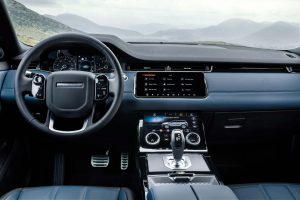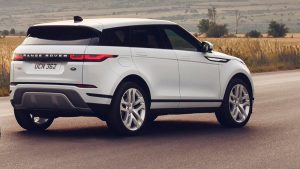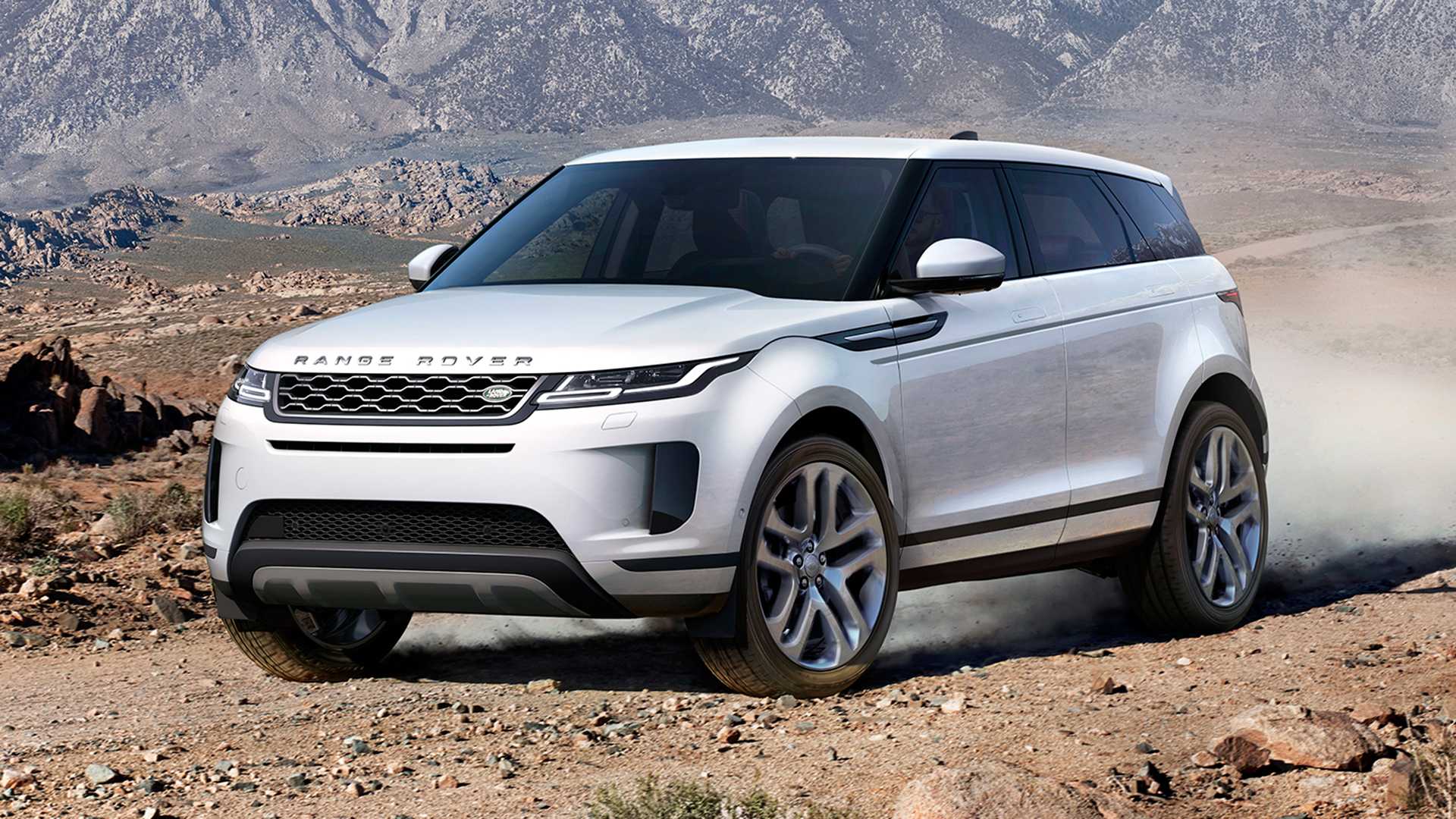By Shari Prymak
The Range Rover Evoque made quite a strong impression when it first hit the market a number of years ago. It was responsible for expanding the Range Rover brand with a more attainable entry-level offering while also introducing a bold, stylish design that has since been adopted across the brand. As the starting point of the Range Rover lineup, it faces the challenge of delivering on Range Rover’s dual mission of off-road capability mixed with undeniable luxury. The latest generation manages to fulfill this mission with a few significant enhancements that don’t mess with the original formula.
The Evoque is, first and foremost, a style-driven vehicle, and the design heavily reflects that. Great design often has a strong and lasting impact and I can think of few SUVs that have managed to achieve that better than the Evoque. After all these years, its striking sheet metal still draws eyes, looking as fresh and modern as ever. The details have been enhanced and modernized to fit the mold of the rest of the Range Rover lineup. The two-door and convertible versions of the previous generation have been discontinued leaving the four-door as the only body type. Overall, the Evoque maintains its unmistakable look and visual presence that has been the hallmark since day one.

Despite being the lower-priced entry-point to the Range Rover lineup, the Evoque’s interior maintains much of the design elements and high-quality materials from the far more expensive Range Rover models. It is a wonderful space to spend time with an unmistakably luxurious feel. The infotainment system is the same InControl TouchPro dual-screen setup found on larger Range Rovers. It’s visually pleasing with nice graphics and decent responsiveness. It is a bit unintuitive, however, and requires time to master. The same could be said for the digital instrument cluster, which, admittedly, is quite attractive and customizable. Front seat comfort is quite good; however, the rear seats are tight with a narrow door opening for entry and exit. A large glass roof helps create an airy feel and reduces the claustrophobic feel. Despite its compact size, the cargo area is a reasonable size and suitable for small families.
The Evoque comes equipped with a 2.0L turbocharged 4-cylinder engine that is available in two states of tune. The standard P250 version produces 246 horsepower and 269 lb-ft of torque, whereas the R-Dynamic P300 model produces a brawnier 296 horsepower and 295 lb-ft of torque with 48-volt mild hybrid assist. Either way, you get a punchy engine with decent low range torque for passing maneuvers, but also one that’s a little rough around the edges when pressed. All models get a smooth-shifting 9-speed automatic transmission matched to an advanced all-wheel drive system with Land Rover’s Terrain Response. The active driveline controls torque distribution to each wheel for optimal traction and can even display its activity on the touchscreen. Different drive modes are available, however, a simple auto mode simply allows the vehicle to do the decision making for you depending on the type of terrain you are on.
None of this off-road capability will matter much to the average Evoque buyer who will more likely be interested in its on-road manners. In traditional Range Rover fashion, the Evoque offers a surprisingly high and commanding seating position, especially for a compact SUV, which helps make it feel more substantial in size than it actually is. It’s an easy vehicle to maneuver and take through corners with well-controlled body motions and a planted feel on the road. On the downside, the ride is a bit on the brittle side, especially with one of the larger wheel options with unforgivingly thin tire sidewall. Outward visibility, particularly out the sides and rear, is a significant challenge as well thanks that shapely sheet metal.

Pricing is another area where the Evoque’s attractiveness can lose a bit of its luster. The base MSRP of $47,950 looks appealing; however, it can inflate in a hurry with my well-equipped P300 R-Dynamic HSE tester carrying an as-tested price of $72,900. That’s far more than what most compact SUVs would command in top trim and well into the price range of the larger Range Rover Velar. Navigate the options list with some restraint, however, and it is possible to configure a nicely-equipped P250 S model for well under $60,000. The S trim also forgoes the complicated digital gauge cluster and lower touchscreen for a slightly more straightforward setup which some may appreciate.
The Range Rover Evoque is very much a form over function SUV. Its focus on style and luxury over outright utility, however, is ultimately a large part of its attraction. Buyers will likely have to pay a significant premium for the privilege of going Range Rover over a comparable compact luxury crossover while also contending with Land Rover’s persistent quirks and reliability concerns. As a minor example of this, my tester’s backup camera would only work intermittently. As a prospect for a three to four lease purchase, however, the Evoque is an attractive option for those eager to ride in style and get into the door of Range Rover ownership.

